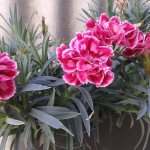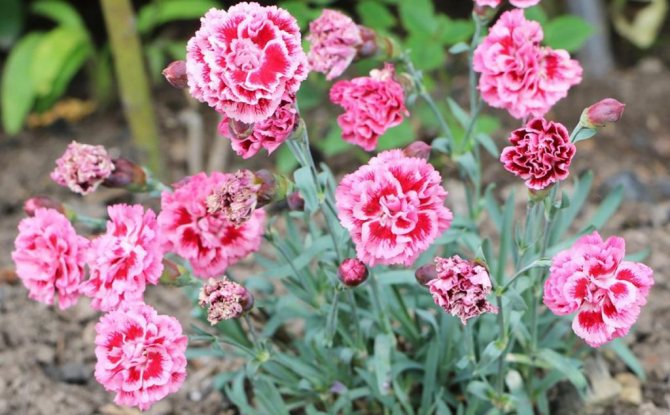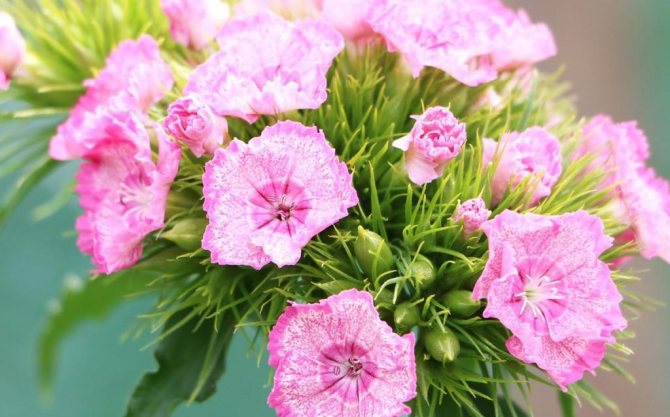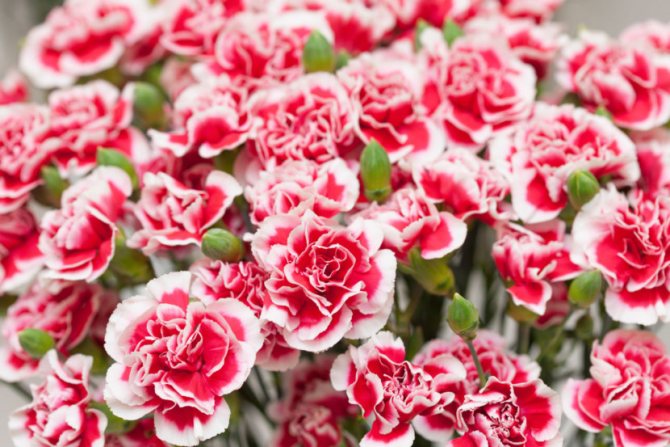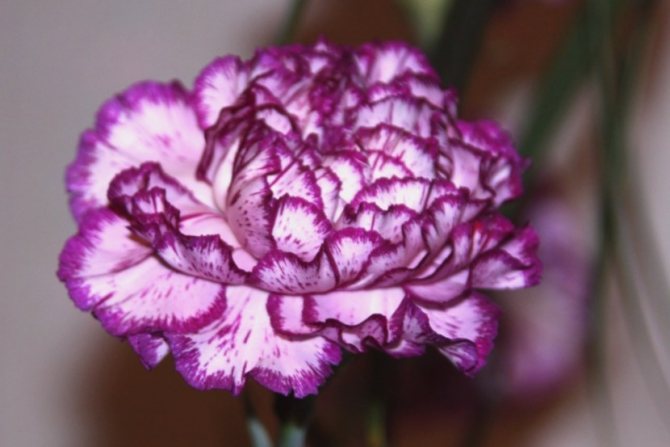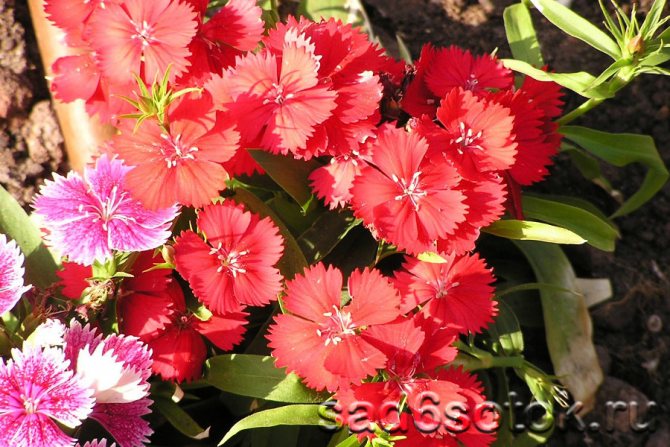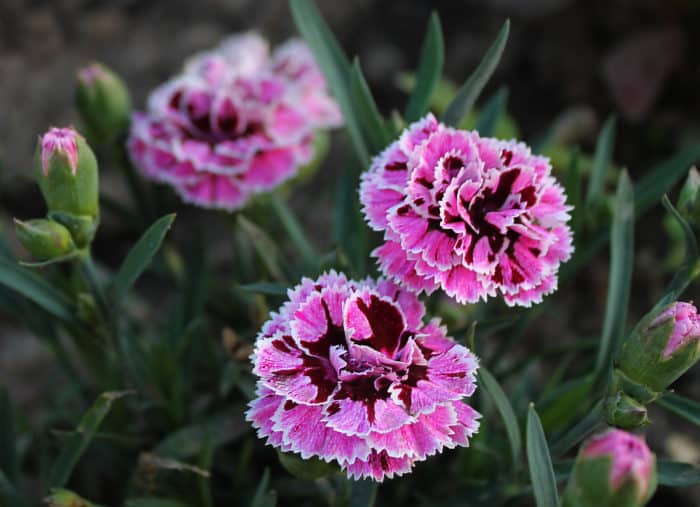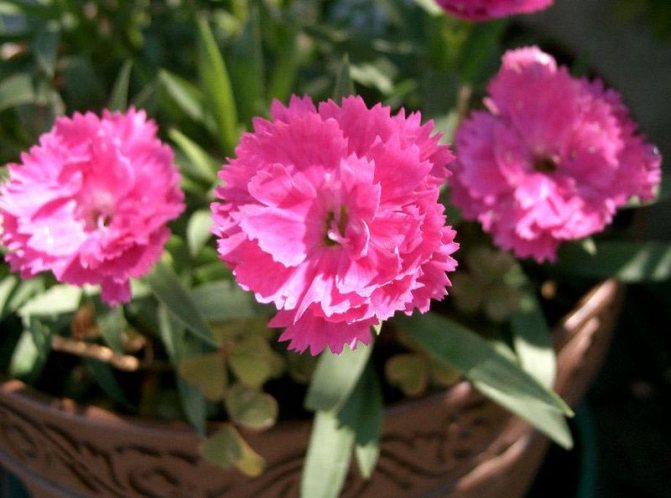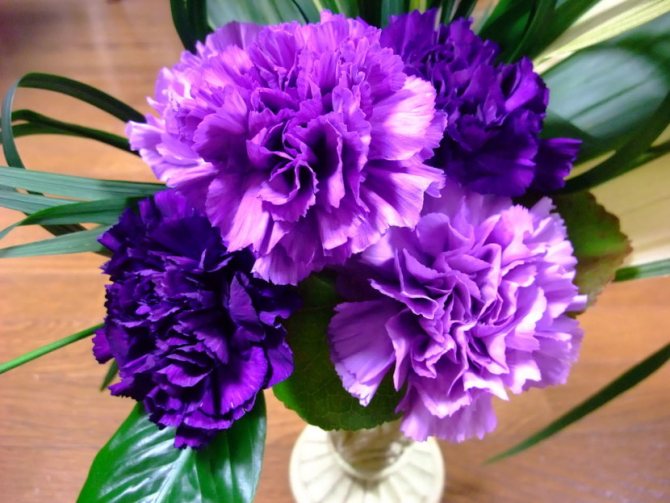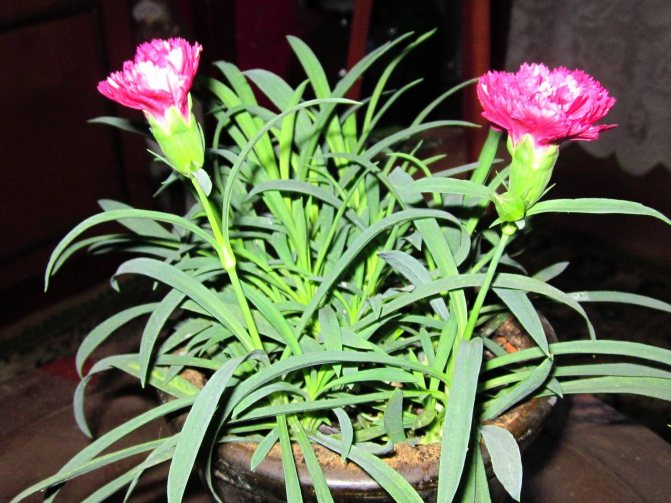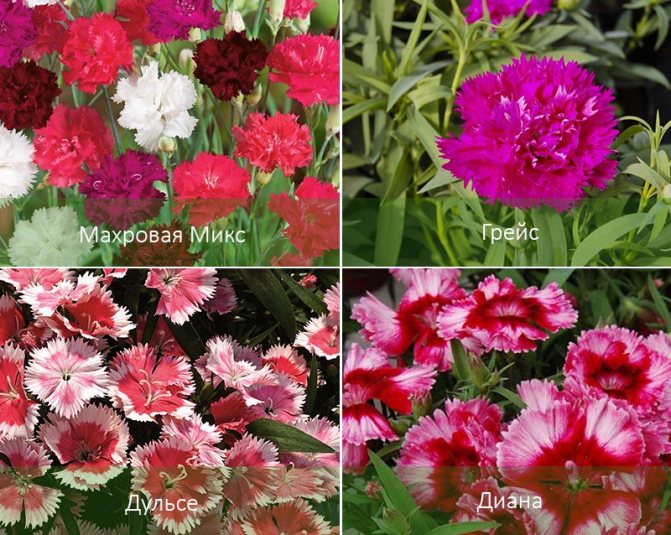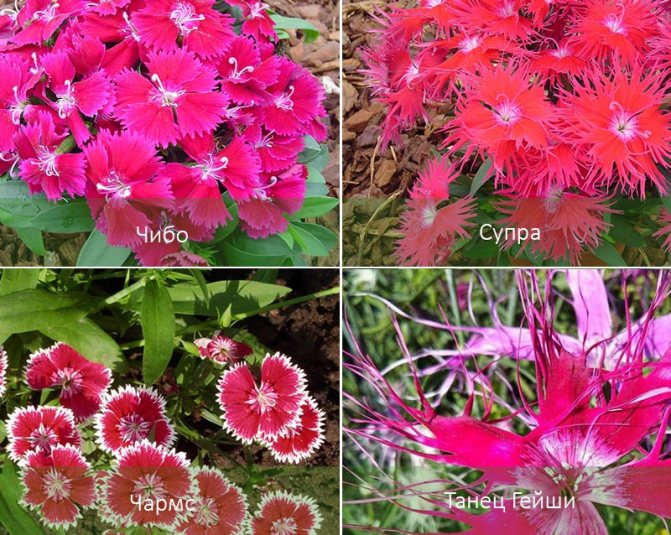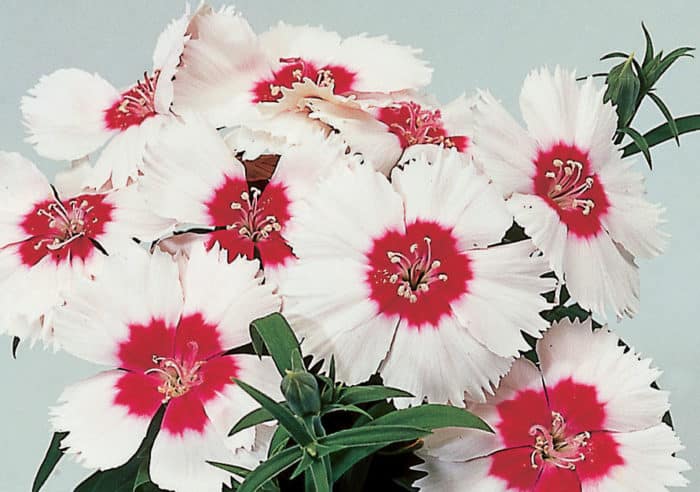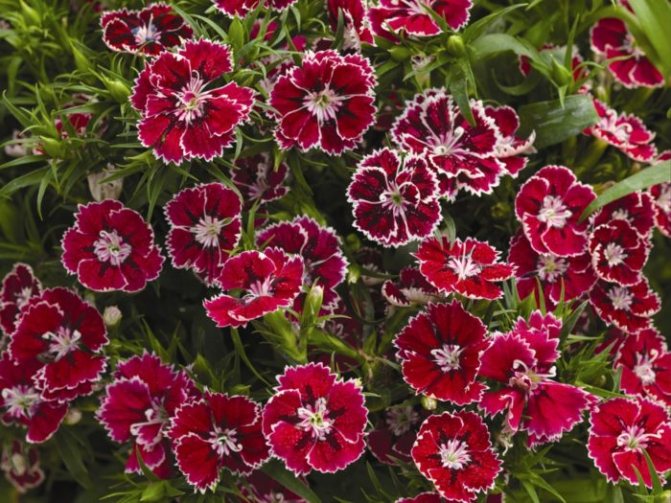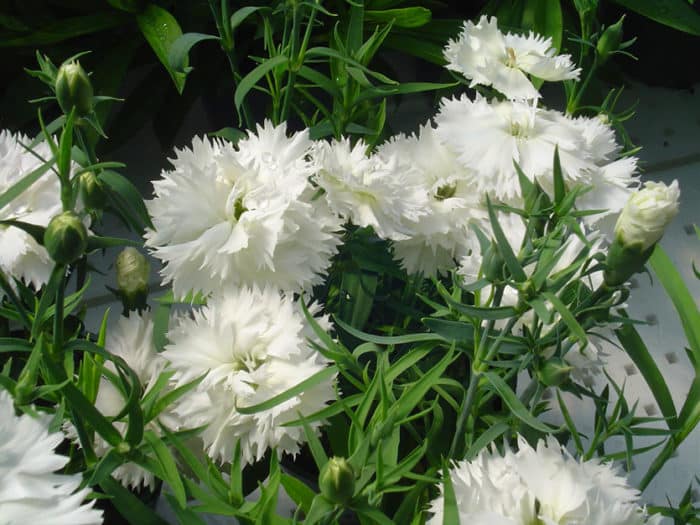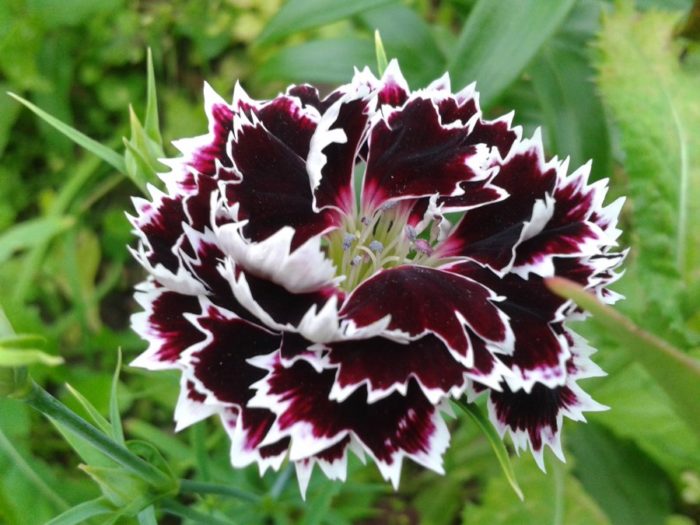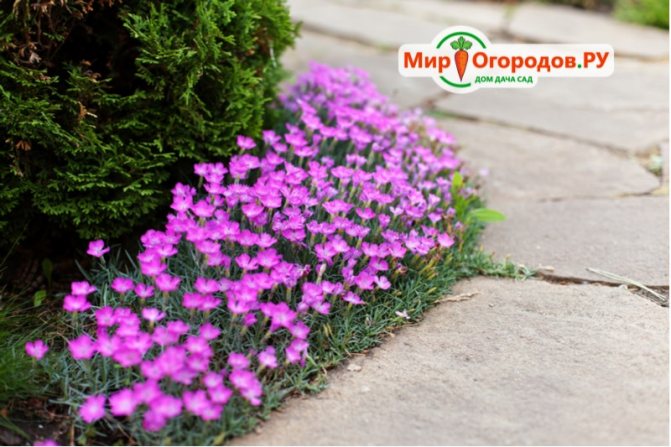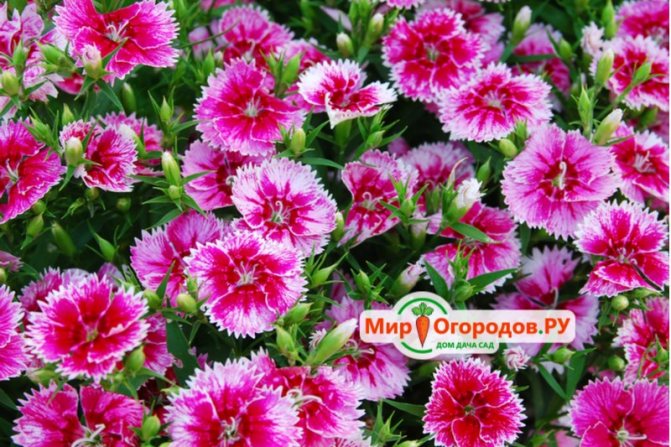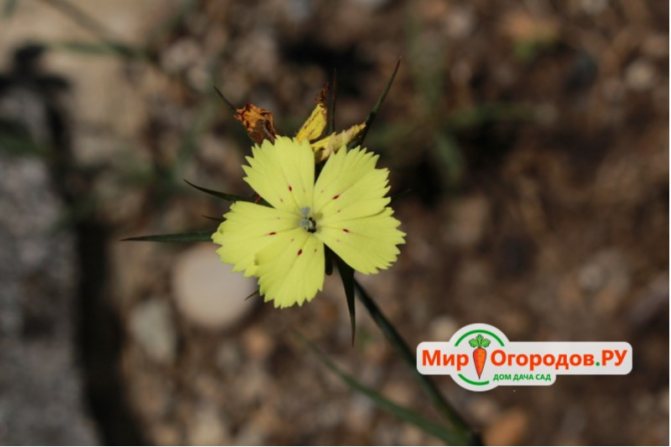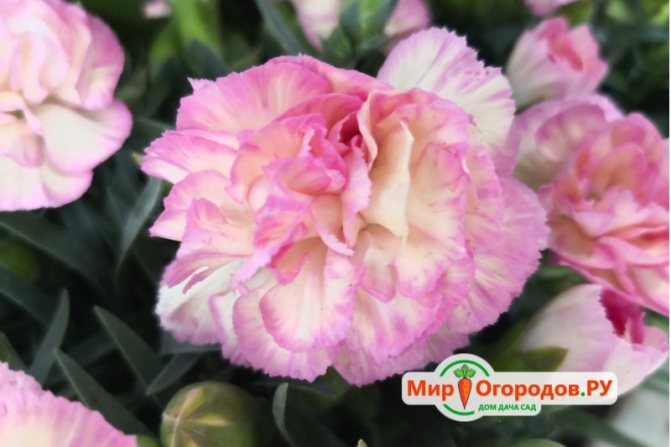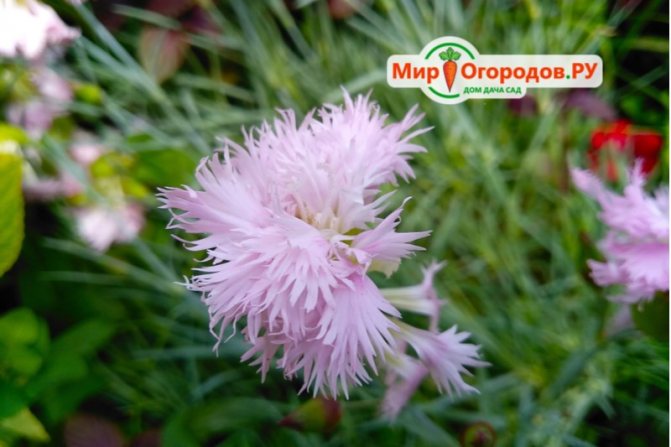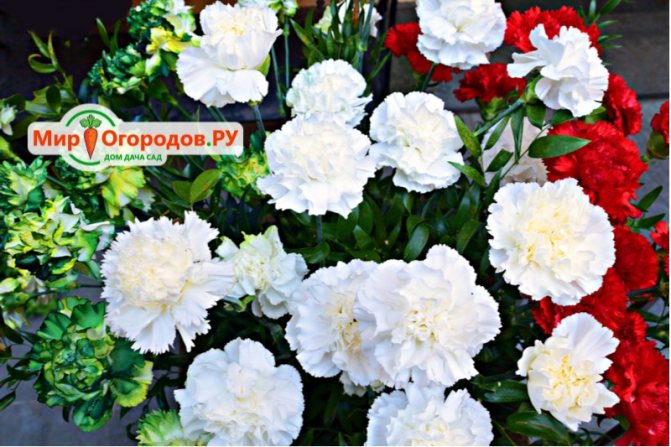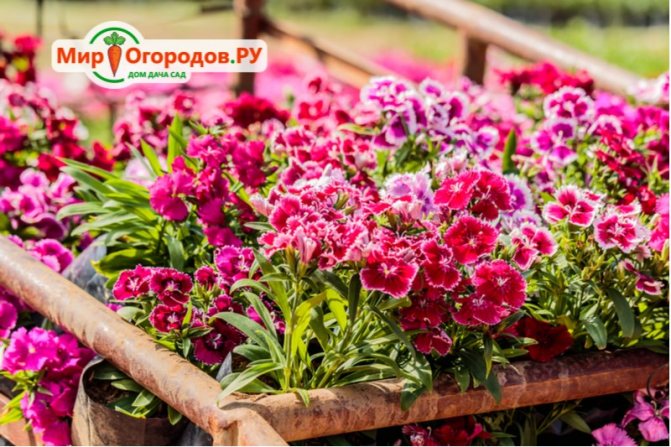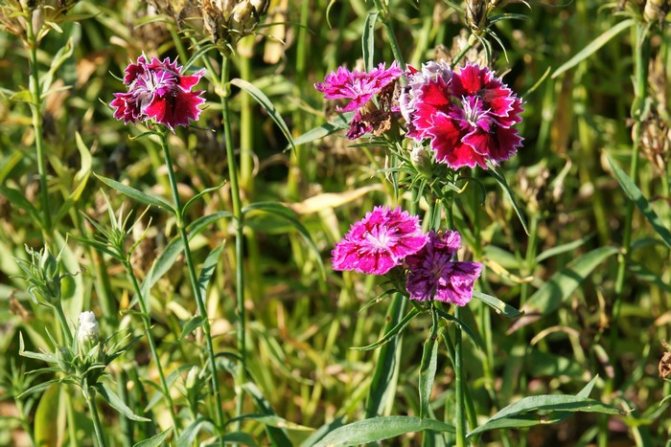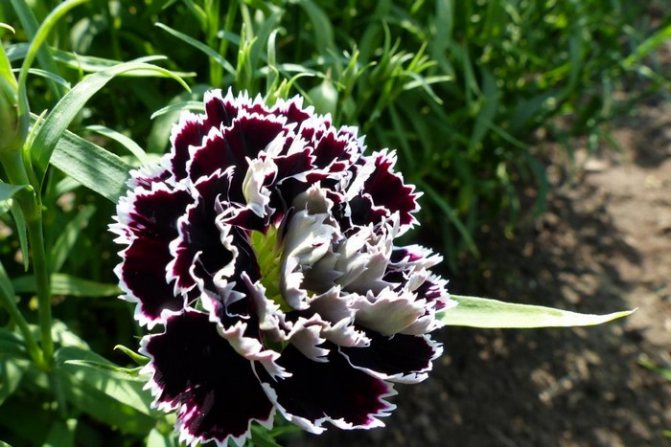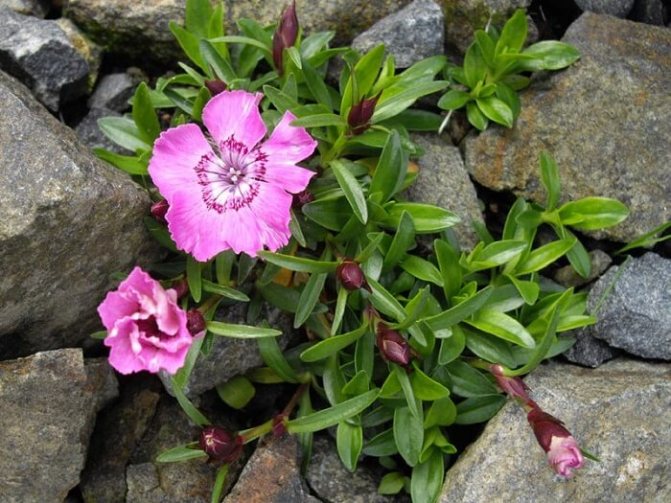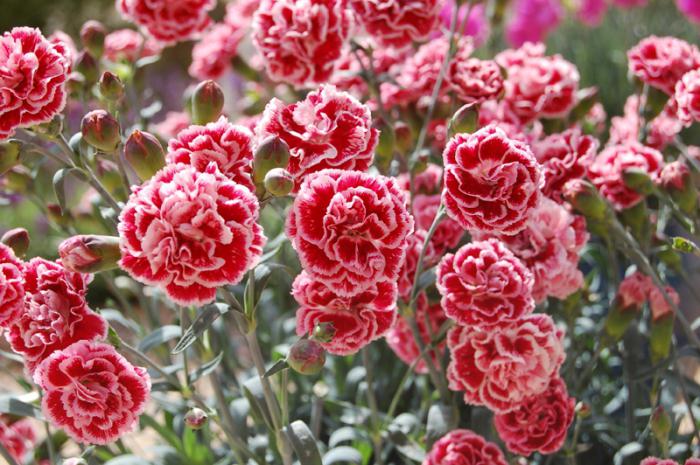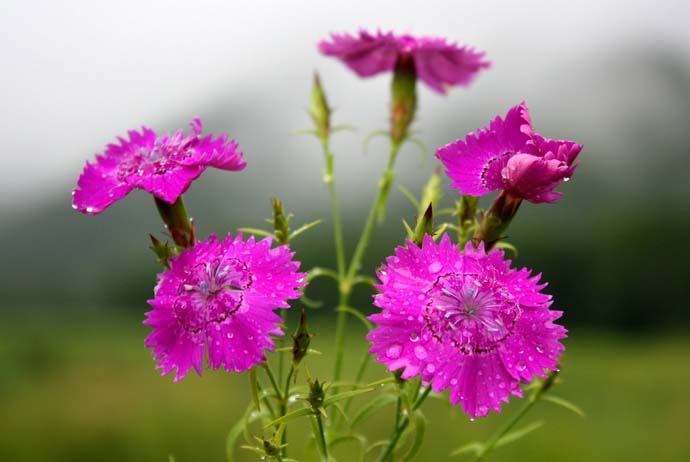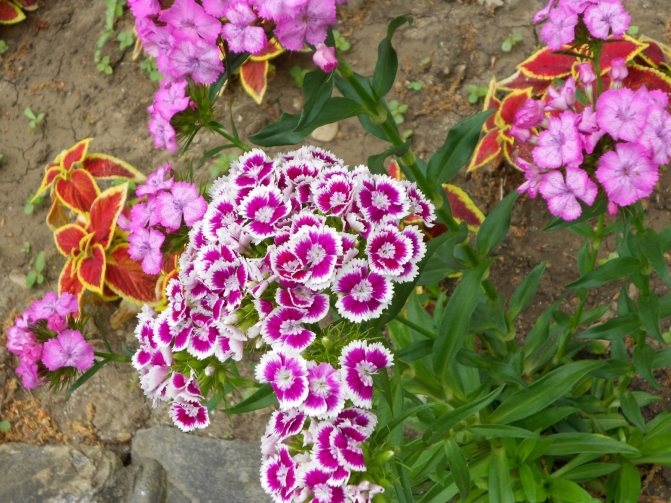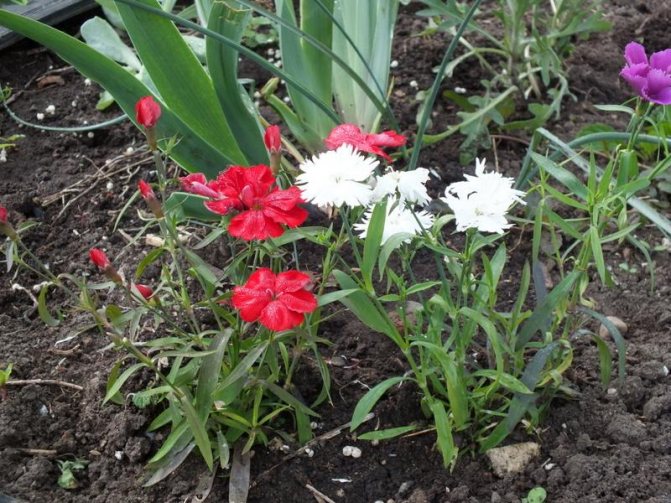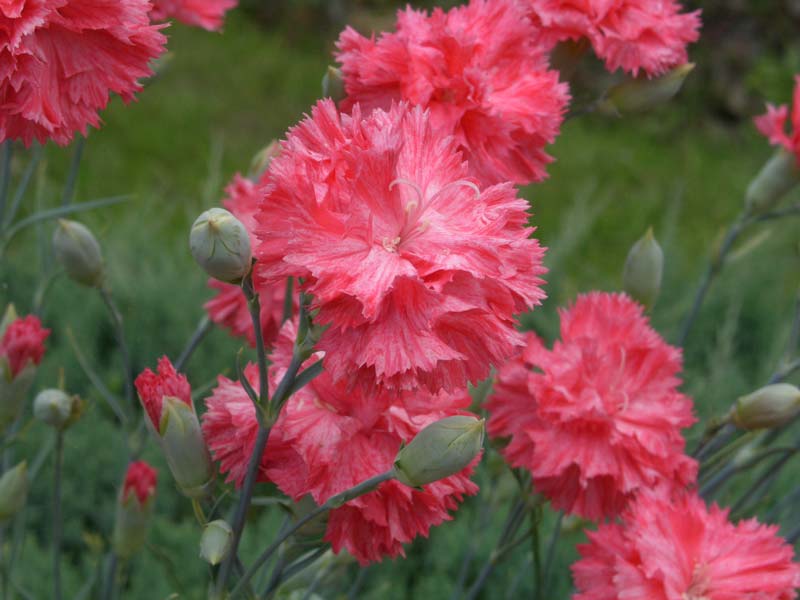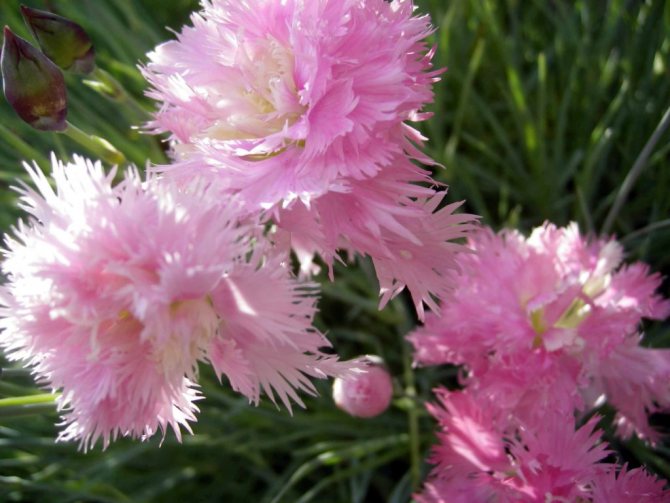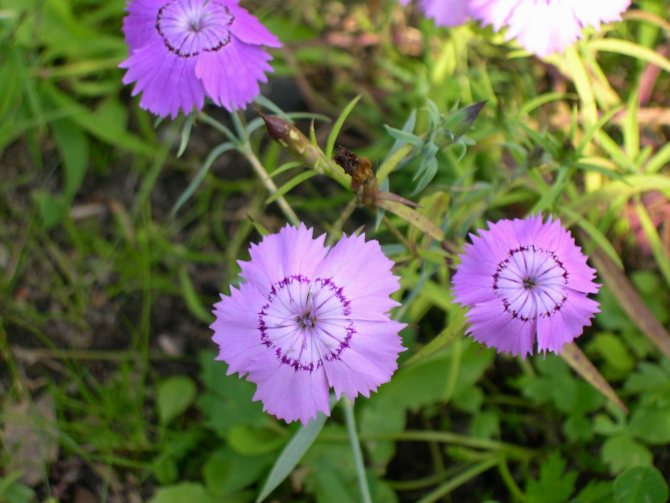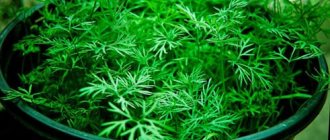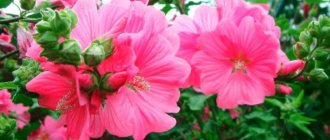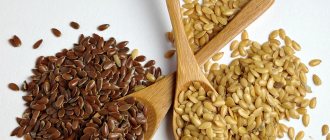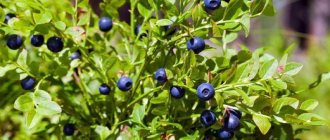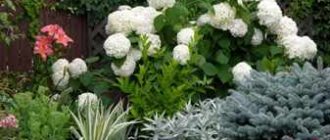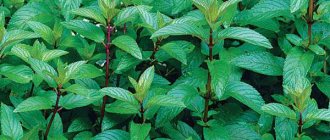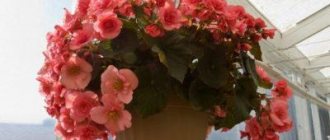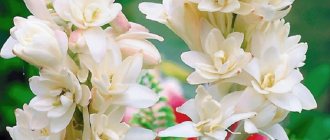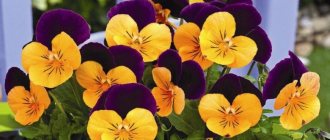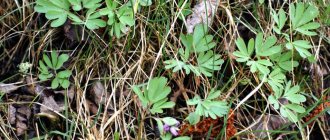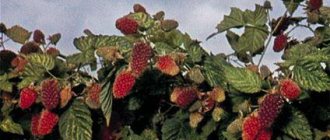Garden carnation attracts with a variety of varieties and colors. The fragrant and unpretentious flower is used for planting mixborders, alpine slides, flower beds. Carnation is a perennial plant from the clove family. The scientific name of the flower is Dianthus in Latin. It means "Flower of Zeus". Such an eloquent designation of the plant was given by Karl Linnaeus, fascinated by its beauty and aroma. In nature, there are about 350 species of perennial carnations. They grow in Europe, Africa, Asia, the greatest variety is found in the Mediterranean. For cultivation in temperate climates, special varieties of perennial carnations are selected, with a photo and description of which you can make the right choice.
Varieties and features of the Chinese carnation
These graceful flowers can be found in almost every summer cottage or garden plot. Their unpretentious care and rich colors have made the plant very popular among flower growers. Theophrastus, an ancient Greek philosopher in the 3rd century BC, called the Dianthus carnation "divine flower" or the flower of Zeus. The first breeding work with the plant began in the 17th-18th centuries. The plant was brought to Europe from China. At first, the flowers had variegated burgundy strokes on the petals.
Perennial Chinese carnation grows in a sprawling or compact bush, depending on the variety. Some hybrids and varieties are grown as annual crops. The height of the bushes of dwarf varieties ranges from 10 to 50 cm. The stems of the plant are smooth and thin, with nodules characteristic of the representatives of the family.
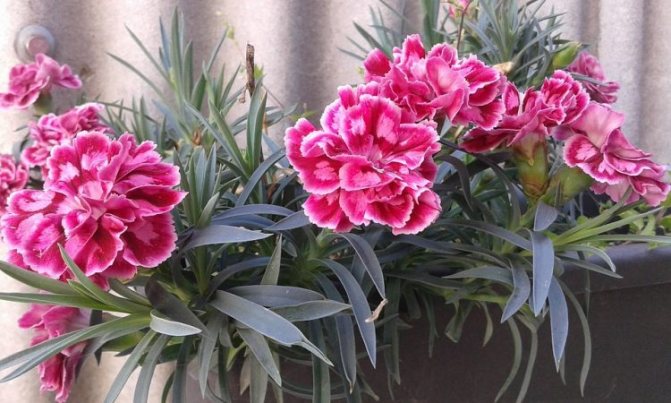
The leaves are narrow and straight, as a rule, oblong, green in color, arranged oppositely on erect stems. Only some varieties have curled leaves.
Plants for cutting and landscape decoration
Perennial carnations, despite the individual characteristics of the varieties, have similar characteristics. The stem of the carnation is herbaceous or semi-lignified. The root is pivotal or fibrous. Leaves are lanceolate, linear or subulate. Plant height from 15 (dwarf varieties) to 75 cm. There is usually 1 flower with 5 petals on the stem. Their edges are jagged or fringed. In some species, flowers are collected in umbellate and paniculate inflorescences. The fruit is a capsule with small black seeds.
Pros of planting perennials:
- long flowering (at least a month);
- ease of reproduction: vegetatively and by seeds;
- many varieties retain their decorative appearance after flowering, leaves and stems of a beautiful gray-green color look great in the border;
- resistance to drought and frost;
- wide range of colors - from white to dark red.
Interesting fact. The popular spice of clove has nothing to do with flowers, it is dry buds of a clove tree.
Flowers
Undoubtedly, this is the main decoration of the Chinese carnation. They can be simple, semi-double or double, single or collected in small inflorescences of three to four flowers, consisting of several petals, and no more than four centimeters in diameter. The smell is pleasant, but subtle.
The height of individual shoots of dwarf varieties is no more than 15 cm, other varieties can give stems up to half a meter long. The plant blooms in pink, white, crimson, coral or cherry.Some varieties combine several shades. In this case, the main color is complemented by a lighter or darker edging and core.
During the breeding work, many hybrids were bred, which are distinguished by compact bushes and long flowering. These hybrids are very delicate and fragile, which is why they are usually grown as annuals.


Preparation of medicinal raw materials
All parts of the plant are used as medicinal raw materials: roots, stems with leaves, flowers and seeds.
Dig up the roots with a garden shovel, remove the soil and rinse well under running water. Then blot with a napkin or towel. Cut into small pieces, spread in a thin layer on a newspaper or a special mesh to dry. Dry in a shaded place with good ventilation (attic, canopy, i.e. out of access to moisture). Can be quickly dried in an oven at 45-50 ° C.
Place the dried raw materials in fabric bags and store for two years. After the expiration date, it makes no sense to apply - the medicinal effect is lost, replace with fresh raw materials.
Harvest the aerial part (stems, leaves, flowers) in dry weather in the daytime (after dew has melted). Cut the stems almost to the root. Separate the flowers and dry them separately, similar to the roots (on a net or dry bedding, spread out in a thin even layer). The stems can be bunched and hung to dry. Store such raw materials in cloth bags or paper-cardboard boxes for no more than one year.
Collect seeds during their ripening period. Pour gently from the capsule fruit. Store in paper bags. Seeds remain viable for 4-5 years.
Popular varieties
We will present you just a few of them, which are especially popular in our country. All of them are quite unpretentious and do not require complex maintenance.
- Diana
Bushes no more than 25 cm in height. Flowering begins in early June, and in the southern regions - at the end of May and continues throughout the warm season. The flowers are quite large, single, of a wide variety of colors. Used to decorate alpine slides, rockeries. It can also be grown in pots and containers.
- Parfight
Despite the fact that the bushes of this variety grow no more than 15 cm in height, they delight with rather large flowers. They are simple, pink in color with a dark or bright spot in the center.
- Charm
Abundantly flowering plant with flowers of various shades. The bushes are not tall, so they are often grown in hanging containers or pots.
Dividing the bush
Reproduction by dividing the bush allows you to get several new plants that completely preserve all the characteristics (terry, color of the petals). The method itself is not complicated, but not suitable for all varieties. Most of them have a taproot that cannot be divided. Varieties with well-developed rhizomes can be tried to divide. The optimal time is spring before flowering. Carefully dig out the bush, divide it into several parts, each of which should contain three living points of growth. Plant the cuttings in prepared holes according to the size of the root system, squeeze the soil around the seedling with your palms, water.
Seed preparation and sowing
It is not at all necessary to buy ready-made carnation seedlings in the store. It is not difficult to grow it yourself. To do this, you need to buy plant seeds in a specialized store. They have an oblong shape and are colored brown. It is recommended to sow them in March, although growers in the northern regions start growing seedlings at the end of January. In open ground (when growing annuals), seeds can be sown in May - the Chinese carnation is not afraid of light return frosts.
Experienced growers do not recommend using ready-made peat soil mixtures for growing it; it is better to mix garden soil with a small amount of river sand. Before sowing, it is necessary to soak the seeds in succinic acid and dry them a little without drying them completely.
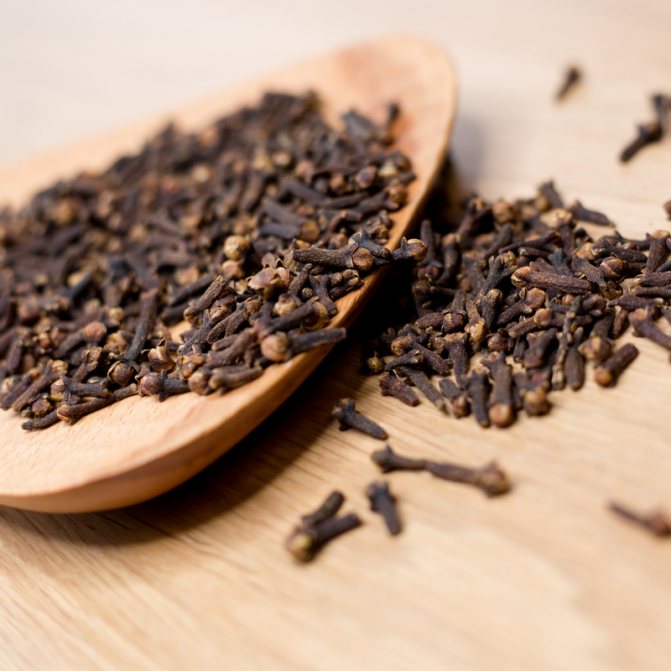

Moisten the soil in the containers, make grooves no more than one and a half centimeters deep, and sow the seeds. To create a greenhouse effect in containers, cover them with glass or foil. For seed germination, a temperature of +20 ° C is required. The first shoots will appear in 10 days. The film can then be removed, and the seedlings can be placed in a well-lit, bright place. When there is not enough light, the seedlings stretch out and become thinner. In this case, additional illumination is required.
Conditions for good growth of carnations
Indoor carnation respects moderate temperature conditions, without consequences transferring light coolness. For normal growth of flowers, it is recommended to withstand from twelve to fifteen degrees of heat, sudden changes in temperature can have a detrimental effect on the carnation.
The soil composition for the normal development of carnations must be sufficiently fertile, relatively neutral. It would be more correct to independently make up a mixture of two parts of sod land, to which leaf earth, sand and peat are mixed in one share. In order to reliably protect the carnation from probable diseases of viruses, the soil should be sterilized before planting seeds, using special preparations for this.
Carnations need abundant light., but direct sunlight is undesirable, at noon the plant should be slightly shaded. In the case when there is not enough daylight for the normal growth of a carnation, experts advise organizing artificial lighting. It should be remembered that a carnation needs four to five hours of normal sunlight for normal development. Otherwise, the carnation will slow down its growth, the flowering will be sluggish and short-lived, the leaves will begin to shrink.
Carnation perceives moisture quite well. Therefore, watering should be carried out regularly, be abundant, especially during the season of active development of the plant and its flowering. Drying out of the earth is not recommended. For watering cloves, you should use soft water at room temperature. Do not seek to create stagnation of moisture, from which the plant can die. The correct solution would be to install reliable drainage at the bottom of the flower container.
In the growth phase, twice a month, cloves should be supported with fertilizing ingredients.... It is best suited for this special formulations containing the required amount of potassium. Fertilizers are diluted with water and even milk, the resulting solution is sprayed with soil in a flower pot. The first feeding procedure is allowed to be performed one month after the seeds are sown.
There should always be an increased amount of moisture in the air. To comply with this requirement, flower bushes should be regularly sprayed. It is best to carry out this procedure in the evening, when the heat of the day is not so strong.
Carnation transplant is not performed, since it is bred as an annual species... Carnation is propagated for indoor cultivation by seed. In the first half of the spring period, the seeds are placed in a mixture of peat and sand to a depth of three millimeters, left in a well-lit place, the soil is regularly moistened with a sprayer. The first shoots can be observed in fifteen to twenty days. The picking of seedlings is allowed after the formation of the second pair of leaves by the sprouts. On the development of the sixth deciduous pair, the apical part should be pinched so that the bush becomes thicker. From the moment of sowing to the beginning of flowering, it takes only four months.
There are several types of carnations that can be propagated using cuttings. After flowering, the planting material is selected and rooted in a substrate diluted with sand. The container is covered with a plastic bag, which must be removed from time to time in order to ventilate the planted cuttings. After a month, the package is allowed to be removed.
Seedling picking
When growing a Chinese carnation from seeds, attention should be paid to this procedure. When the seedlings have 2-3 true leaves, they must be dived. Young plants are transplanted into peat cups with nutritious soil. Before planting a perennial Chinese carnation in open ground, it must get stronger. In order for the seedlings to harden, in good weather they can be taken out on a glazed loggia or balcony.
If you plan to grow a carnation as a houseplant, it is immediately planted in pots. When 4-6 true leaves appear on the seedlings, it needs pinching, which ensures the splendor of the future bush.
Seedlings are planted in open ground in mid or late May, when the threat of recurrent frosts has passed.
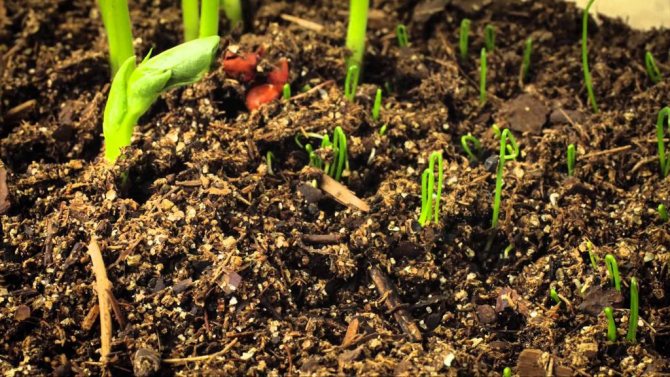

Carnation care at home
Unfortunately, once planting a carnation in a pot at home, it is impossible to constantly enjoy its abundant flowering. Every year, the carnation is renewed from seeds or by cuttings, and the old bush is thrown away after flowering.
For growing carnations, a mixture of turf soil, peat and sand is used. Choose a small pot with drainage holes. Drainage is laid out at the bottom of the pot.
Carnation is a light-loving plant, therefore, it is placed in a well-lit place, while shading from direct sunlight. If the daylight hours are less than 5 hours, then the place where indoor carnations are grown should be additionally artificially illuminated.
Water the cloves abundantly as the substrate dries up with water at room temperature. Drying out of the soil should never be allowed.
Cloves love moist air, so daily spraying will be very beneficial for them.
To prolong flowering, old flowers are removed, only a few are left for the purpose of breeding by seeds.
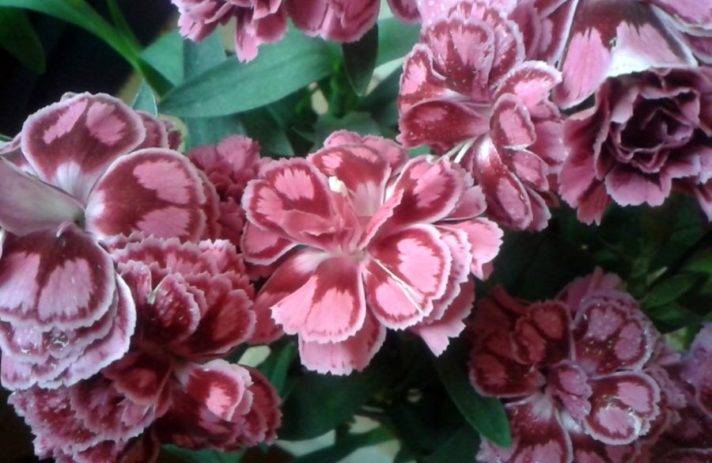

Cuttings
This is a fairly simple and common breeding method. But using it, you must follow certain rules.
Cuttings are cut from young shoots without buds into three knots. There should be a lower cut at a distance of one centimeter from the knot. Leaves from the bottom are removed completely. Longitudinal cuts must be made along the handle.
The harvested material is germinated in containers with sand, covered with a film or jar. The humidity and temperature under the shelter must be constant. Cuttings take root pretty quickly.
Reproduction
Indoor carnations are propagated by seeds, which are sown in March or April. The seeds are sown in a light peat and sand substrate, after which they are moistened with a spray bottle. The seeds are germinated in a bright place. In the stage of two true leaves, the seedlings dive into separate pots. For tillering, at the stage of 5 pairs of leaves, pinch the tops of the seedlings.
Some species are propagated by cuttings, which are taken after flowering and rooted in a light substrate with the addition of sand. After planting, containers with cuttings are covered with polyethylene, which is periodically removed, airing the planting. After about a month, the plastic bag is removed.
Landing in open ground: timing and location
In publications for gardeners, you can often see a photo of a perennial Chinese carnation. Planting and caring for this plant will not cause serious problems even for novice flower growers, although they have some peculiarities.
The recommended time for planting this variety of carnations in open ground is the last days of May or early June.Refined and sophisticated Chinese carnation prefers dry and well-lit areas. The longer the daylight hours (16-18 hours), the sooner the bushes will bloom.
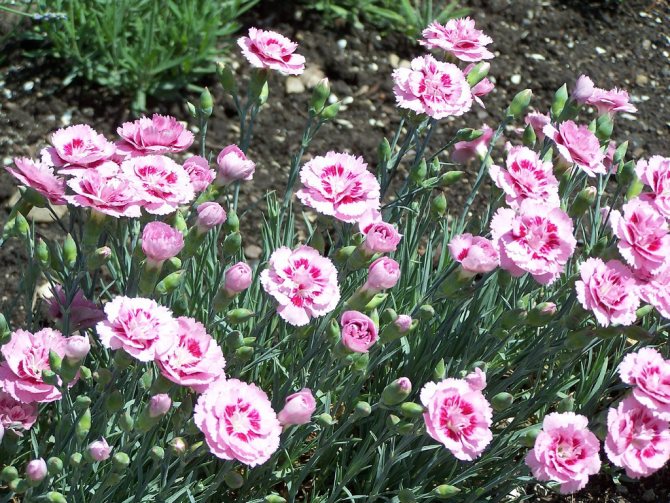

The stem becomes fragile, becomes thinner, wilts over time, and the flowers become too small with a lack of light. The Chinese carnation develops well and blooms actively on the western, as well as the eastern, southeastern side of the site. Before planting the plant, you should carefully dig up the area and fertilize it with humus.
If you plan to plant a carnation in a flower bed, you must first remove all weeds. On the prepared bed, the seedlings are planted, leaving a distance between the bushes of 20-30 cm. The sprouts should not be freed from the earthen coma, the plant is transferred to the hole with it. This will preserve and not injure the root system.
In order to prevent the graceful stems from breaking, a peg is placed next to each carnation when peduncles appear, to which the peduncles are tied. For Chinese carnations, sandy loam or loamy soil is suitable. Moderately fertilized and well-drained lime or dolomite flour is added before planting. This carnation does not like excess moisture, and its stagnation can destroy the plant.
Conditions in the house for growing carnations in a pot
There is no need to create any special conditions for a carnation.
It is not demanding, it is not whimsical at all, therefore, initially properly planted, it takes root well, grows and blooms.
Lighting
Carnation is photophilous, and lighting for it should be sufficient.
It is better to place flowers in the house on the east, south, southeast side - in order to maximize the daylight hours. In autumn and winter, when the days are short, you will have to additionally illuminate the plant at least occasionally so that the carnation does not remain in complete darkness for a long time.
With a constant lack of light, the plant grows poorly, becomes smaller, the flowering period is reduced.
Temperature
The optimum temperature for room cloves is + 20–25 ° С. But at the same time, the carnation normally tolerates the cool temperature of + 13-15 ° C and the heat of + 30-35 ° C.
Soil mixture
Carnation loves sandy loam soil, sandy, Chinese loves clay.
The reaction of the soil is slightly acidic or neutral. The soil mixture can be compiled independently by adding organic matter to the ground - humus, turf, wood ash, peat or mineral fertilizers, such as potassium-phosphorus fertilizers. But in urban conditions it is probably easier to buy a ready-made universal soil mixture - in it the carnation grows excellently.
Problems with growing carnations can arise from poor soil drainage, so take care of drainage. The abundance and stagnation of water leads to root rot - and the plant dies.
Top dressing
Chinese carnations planted in open ground begin to be fed from the second year after planting. For this, complex or potassium fertilizers are used for flowering plants. One bush will require five grams of nutrients. Fertilizers should be applied very carefully so as not to harm the roots. It is strictly forbidden to use fresh manure and chlorinated fertilizers.
Home-grown Chinese carnation also needs additional nutrition. The plant is responsive to fertilizing and responds to them with long and abundant flowering. If the carnation is grown in a substrate without soil, then fertilizer is applied at least once a week. If a mixture of soil and substrate is used, then the cloves can be fertilized every two weeks.
Reproduction of carnations at home
Indoor carnations are propagated by seeds in early spring (March-April). Seeds are sown in a light substrate consisting of sweeping peat and sand. The pot is placed in a well-lit place, and the substrate is moistened with a spray bottle so as not to damage the seedlings.After the formation of two true leaves, the seedlings dive into separate pots. After the appearance of the fifth pair of leaves, the plant is pinched in order to form a fluffy bush.
Also, some types of carnations are propagated by cuttings, which are taken after flowering. Rooting is carried out in a light substrate. The stalk is covered with plastic or a jar, and after a month the cover is removed. You can also root the cuttings in a container of water until the roots appear. There should be a little water, so it needs to be constantly added.
Pruning buds
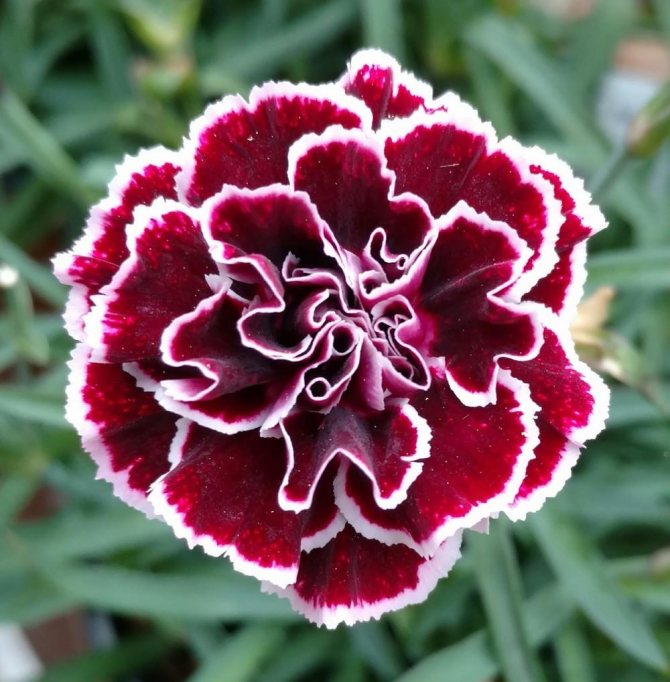

To extend the flowering period of the plant, the stems on which the buds have bloomed, are cut to 15 cm from the soil surface. After that, the bushes are fed with mineral fertilizers, loosened and watered moderately. You will see new shoots soon. Faded inflorescences can be saved to obtain seeds.
Withered shoots cut off all summers for abundant flowering. For the winter, it is necessary to cut off all the green part, leaving no more than ten centimeters above the soil surface.
Diseases and pests
Chinese carnation, with proper care, is not exposed to diseases and pests. The prerequisites for the appearance of diseases are waterlogging of the soil, thickening of plantings, overfeeding with fertilizers (an excess of nitrogen in the soil is especially harmful), or vice versa, a deficiency of potassium. Also, Chinese carnation is susceptible to the same fungal diseases as tulips - do not plant them nearby. It is not recommended to cultivate cloves in the same place for more than 5 years; in order to prevent planting from autumn, they are treated with a fungicide.
If red or dry spots appear on the plant, the bushes wither regardless of watering, the affected plants will have to be destroyed (to avoid disease of the rest), and the plantings must be treated with a fungicidal preparation.
An insecticide treatment will help to destroy spider mites or other pests.
Use in landscape design
A huge number of old and newly bred varieties allow this type of carnation to be used in landscape design. Delicate and bright flowers look beautiful along the paths, effectively border the flower beds.
In mixboards and on ridges, you can use varieties of different heights. This carnation and rock garden will decorate. For landscaping gazebos, the plant is planted in flowerpots.
Many flower growers make their original and unique compositions in the garden, using forget-me-nots, not blooming green plants, as partners.
A stunning effect is given by planting carnations in combination with pansies. But the proximity to tulips can harm both plants, since they are prone to being affected by the same diseases.
Look at the photos of the Chinese carnation posted in the article. Planting and caring for this plant is pretty simple. The reward for your efforts to grow it will be long and lush bloom.
Agricultural Tips
The garden carnation is an undemanding and persistent plant, but in order to achieve abundant and long flowering year after year, you need to know its characteristics. Among the main recommendations for planting and grooming:
- When choosing a landing site, give preference to sunny areas. In partial shade, the curtains will not become lush.
- Avoid low-lying areas where water stagnates. Plants cannot tolerate excess moisture.
- It is necessary to establish regular watering.
- Seasonal maintenance includes loosening the soil, killing weeds and removing dead buds.
- Tall varieties are tied to a support to avoid stem breakage in strong winds.
As a top dressing, mineral fertilizers are used twice a season. The first introduction of drugs is in the spring. They must contain nitrogen to stimulate the growth of green mass. The second feeding with phosphorus-potassium fertilizers is necessary when tying buds. It will provide abundant flowering.
Advice. Despite the frost resistance of plants, experienced gardeners cover perennial carnations in winter.The procedure is especially important in dry weather.
Mr. Dachnik recommends: cloves - medicinal properties, use
Cloves have been used in folk medicine for quite some time. The list of its useful properties is wide:
- antiseptic;
- spasmodic property;
- antivirus property;
- diuretic effect;
- disinfection.
However, there are contraindications for the use of this plant. Cannot be used to treat children under the age of 2 years. It is highly not recommended for use by people with high blood pressure, gastritis, and pregnant women. It is worth refraining from using in the presence of fatigue and tension syndromes.
The best varieties and hybrids
For decorative purposes, Chinese carnation has been grown for more than three hundred years, and during this time numerous attractive forms, spectacular varieties and hybrids have been obtained. In amateur floriculture, special attention is paid to dwarf varieties with compact bushes reaching a height of 15–20 cm, which are characterized by lush flowering.
The garden varieties of the Chinese Geddevig carnation with rounded bushes 30–35 cm high and large non-double or double flowers 5–6 cm in diameter are very popular.
Carousel (Merry Go-Round)
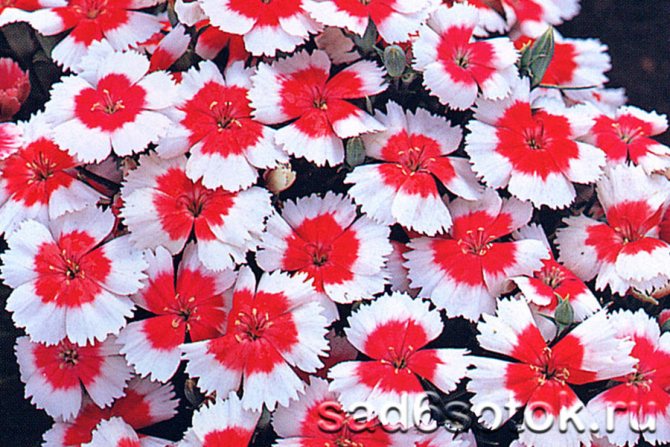

Chinese carnation variety Carousel (Merry Go-Round)
The joyful flowers of this dwarf variety of Chinese carnations will decorate a flower bed, look great in a hanging planter or flowerpot on the porch. Bushes are neat, up to 20 cm high with knotty stems and numerous flowers 5-6 cm in diameter, white with a scarlet center.
The cut edges of the petals and the shiny, shiny texture give the cute variety even more charm. Long bloom - from early July until autumn frosts.
Vorozheya
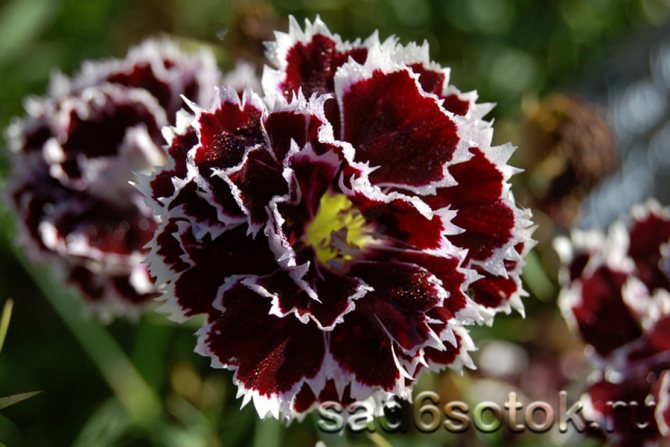

Chinese carnation variety of Vorozheya
A wonderful variation of the Geddevig carnation with densely branched light green stems forming small bushes about 35 cm high. The plants are completely covered with double flowers 4–5 cm in diameter. Satin petals, crimson-black with a jagged edge and a bright white border.
The bloom is very generous, from July to October frosts. This is one of the best terry dark-colored varieties - very effective and unpretentious.
Diana F1 Crimson (Diana F1 Crimson)
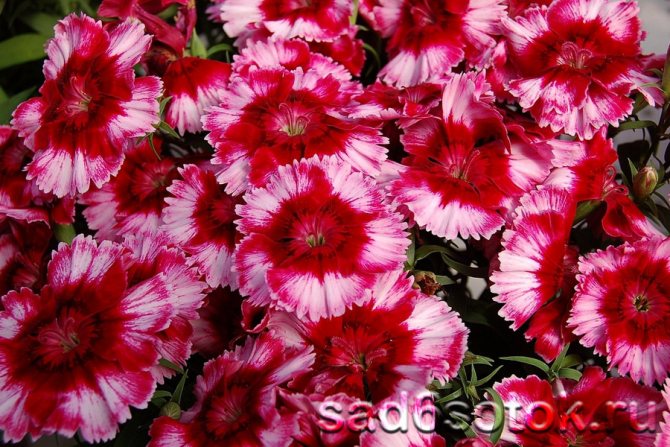

Chinese carnation grade Diana F1 Crimson Picotee (Diana F1 Crimson Picotee)
A bright hybrid of Dutch selection is distinguished by large colorful flowers with a diameter of 7–8 cm, adorning a small neat bush 20–25 cm high. The petals are wide, rounded, open, deep red with a finely toothed edge. The flowering is luxurious - from the beginning of July to the dank autumn cold. This hybrid is a great choice for potting or border decoration.
In addition to the colorful Crimson form, the series includes many other attractive variations, of which the most interesting are:
- Diana F1 White (Diana F1 White) - snow-white with a split edge of the petals;
- Diana F1 Blueberry (Diana F1 Blueberry) - bright purple;
- Diana F1 Crimson Picotee (Diana F1 Crimson Picotee) - with corrugated dense pink-crimson petals;
- Diana F1 Scarlet - fiery red, catchy.
Grace F1 crimson
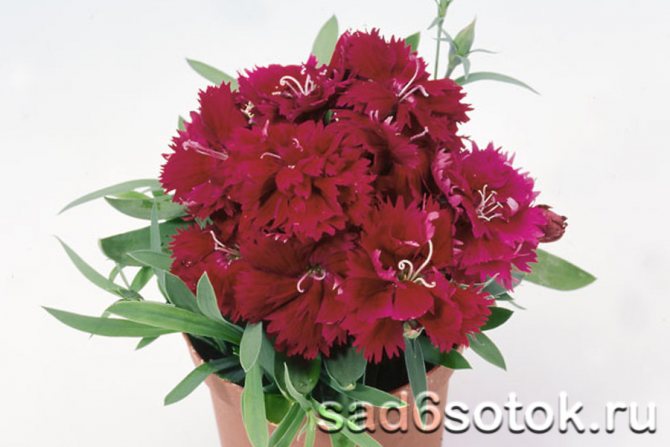

Chinese carnation grade Grace F1 Crimson (Grace F1 crimson)
Another stunning red hybrid from the same Dutch manufacturer Hem Genetics. Unlike the previous series, these plants are adorned with double, full flowers. Low bushes, growing, form dense borders or flowering lawns.
Plant height - 18-25 cm, flowers are very large, 6-8 cm in diameter, with a fringed edge. Form Grace F1 Crimson is characterized by flowers of a dense wine-red color with spectacular white stamens.
Other beautiful varieties are presented in the series:
- Grace F1 Salmon - salmon pink;
- Grace F1 Deep rose - raspberry pink;
- Grace F1 White - sparkling white.
Grace hybrid Chinese carnations are suitable for indoor cultivation.
You will find information about other interesting species and varieties of carnations in the article "Carnations - the best varieties and hybrids".
Preparing for winter
Garden carnation is characterized by good frost resistance, and therefore tolerates winter cold quite easily. If the winter turned out to be snowless, then in this case it is recommended to cover the bushes with spruce branches or sawdust. This event will help prevent freezing.
On a note! In addition, when growing garden carnations for several years, it is recommended to transplant the bushes to a new place from time to time. This is done, as a rule, in late July - early August.
Interesting to know
There is a lot of interesting information about a garden carnation that is useful for every gardener to know:
- The leading country in the cultivation of carnations is Tanzania. Most breeders are working on developing new varieties, improving existing ones. Thanks to this, the popularity of cloves is growing all over the world.
- At home, carnation does not tolerate noise. In such an environment, the flower withers quickly.
- It is customary to give flowers to young people entering the army. The flower symbolizes victory and a healthy return home. The tradition goes back to France and is used in other countries. Soldiers who carry a carnation with them consider it a talisman that protects in difficult times.
- Italian women pin a flower to the uniform of their lover, thus showing love. She protects him in dangerous situations.
- Clove is one of the most exquisite spices known around the world and used by many culinary experts. Only it is impossible to get it from an ordinary garden flower, the effect will be completely different. The spice is made from the tropical clove tree.
- The carnation is not always a symbol of blood, history knows the "revolution of carnations", which ended peacefully.
- The Duke of Windsor adorned his costume with a white bud. For this reason, she is an indicator of the style of aristocrats and easy life.
- The Belgians regard the carnation as the flower of the poor. Most often it can be seen in the miners' front gardens. It symbolizes the flowering of life after the dark mines. The bouquet is presented as a gift to a daughter who is getting married.
- The needlewomen are very fond of carnation, who decorate old lace with it.
- The carnation is considered to be the "Divine Flower" that is used to decorate tables.
Landing
You can plant carnation seedlings when the risk of frosting back disappears. As a rule, this time occurs in mid to late May. To plant the bushes, dig holes with dimensions of 20 * 20 cm.Also keep a distance of 20 cm between the rows. Lay a drainage layer on the bottom of the planting holes. For these purposes, use gravel or broken brick. Next, carefully remove the cloves from the pots and plant them along with the earthy clod. Cover the voids with soil and water the flowers. With proper care, they can give buds this year.
Symbolism
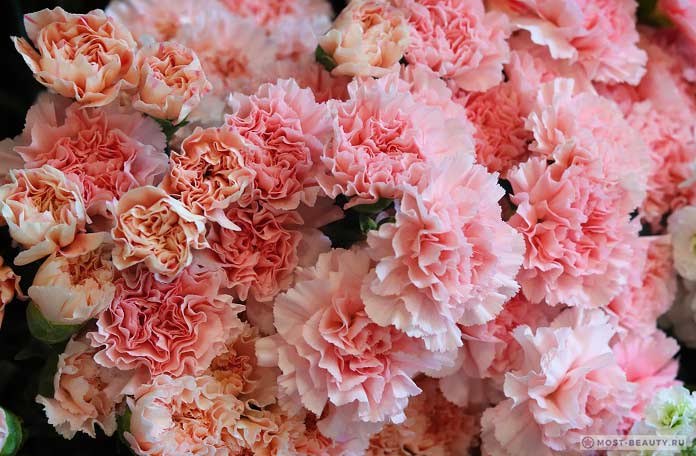

It has long been customary to give carnations to heroes and winners. Even in Ancient Egypt and Rome, they were used at all sorts of celebrations and honors of warriors. Therefore, it is not surprising that in Soviet times this flower became a vivid symbol of Victory Day, it was presented to veterans.
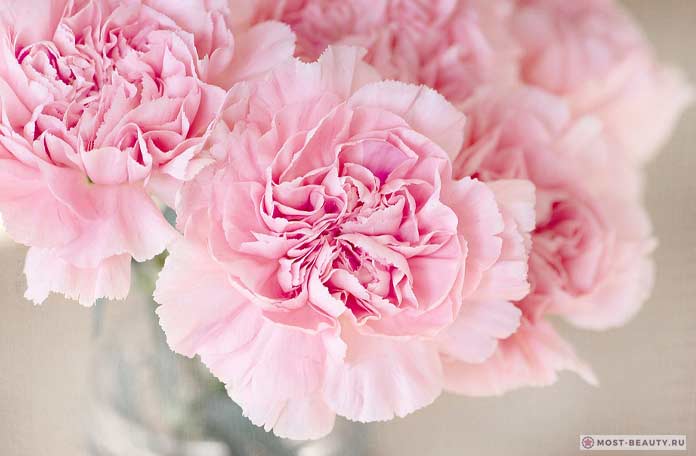

The ancient Romans considered this flower a symbol of the hunter-goddess Diana. During the Renaissance, scarlet carnations were often depicted in paintings with the Madonna holding a baby in her arms. They served as a symbol of high love.
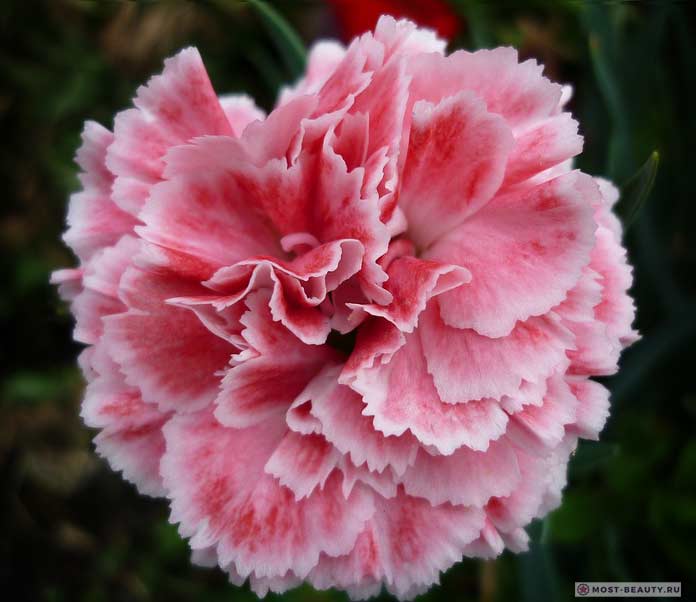

In the East, traditional carpets are often decorated with such floral motifs. It is believed that this plant symbolizes happiness and prosperity in the home.
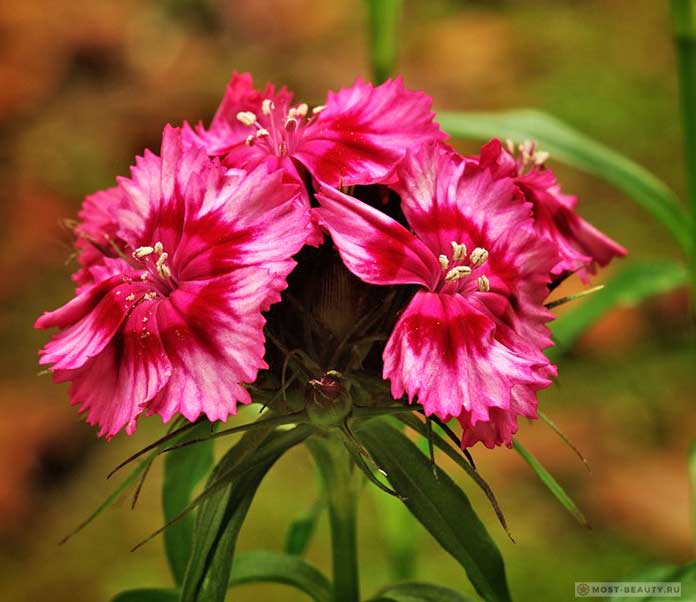

In Germany, carnations are considered a symbol of consistency, because even when they fade, they retain their original appearance and a share of charm. Previously, they were often given to lovers as a sign of engagement.
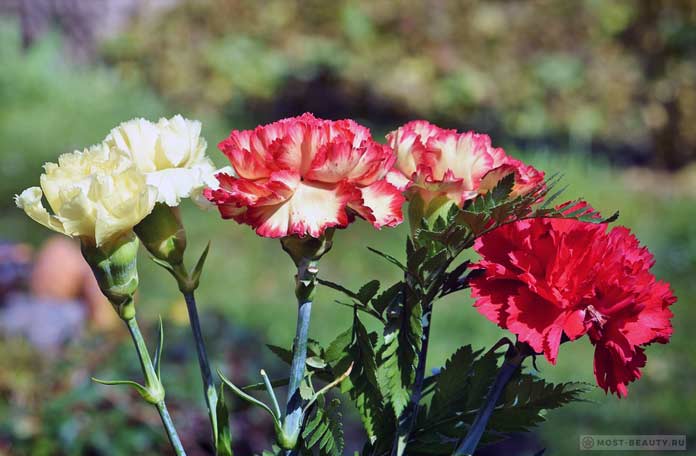

In England and France, initially only kings and queens could afford to decorate their heads with a carnation wreath. Therefore, in these countries, this flower is considered a symbol of aristocratic origin and wealth.
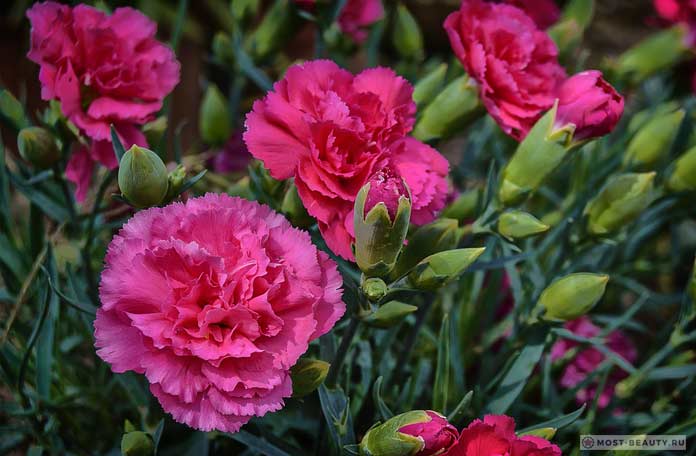

Subsequently, with the same sign of belonging to the aristocracy, Hollywood actors began to wear carnations in boutonnieres at the dawn of the 20th century. But the French revolutionaries used these flowers in the same way, but as a sign of distinction and loyalty to their beliefs. The flower is so loved by the French that every April in the French village of Falicon they celebrate the Carnation Day, which is used to decorate everything around.
Beneficial features
Carnation has not only excellent decorative properties, but also medicinal properties. It is often used in the medical field to treat a wide variety of ailments. This culture contains many useful elements:
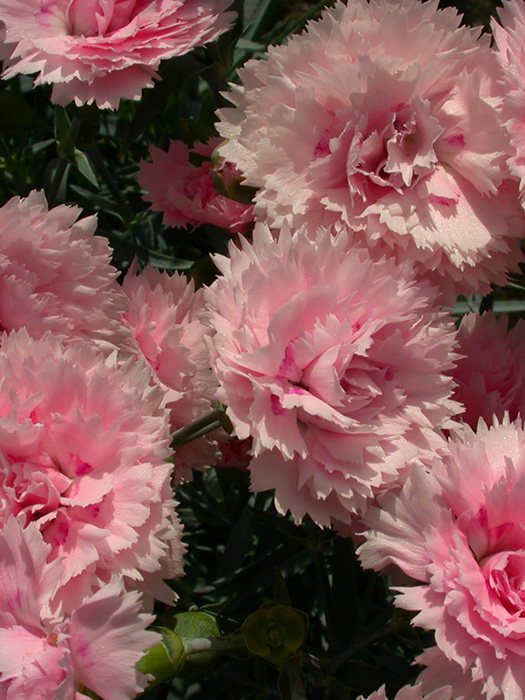

magnesium;- zinc;
- copper;
- iron;
- sodium;
- potassium;
- carbohydrates;
- proteins;
- tanning compounds;
- essential oils;
- beta carotene;
- ascorbic acid.
Clove-based medicines have a diaphoretic, hemostatic, analgesic and sedative effect. They are used to treat diseases of the genitourinary system, stop bleeding and relieve migraines. Also, tinctures and decoctions from this plant help to cure inflammation and dermatitis.
Description
This is a low-growing, spreading plant. Stems are divided into flowering and non-flowering, 1-st higher and more branched, 2-nd more tall narrow leaves. The five-petal flowers of this modification of the carnation are small, the color of the cultivated grass may depend on the species, it is diverse: all tones are scarlet, purple, azure, snow-white. At the base of each petal there is a dark line, repeating the sinuous shape of the edge of the petal, this makes the flower very beautiful.
A wild watch of dark scarlet color. The flower is called “watch” for its habit of joining petals at sunset, in principle it is also covered in rain. Small seeds are in capsules, ripen in September. Herbal carnation blooms all summer and is undemanding to care for, in fact, for this reason, it is often used for decorating purposes.
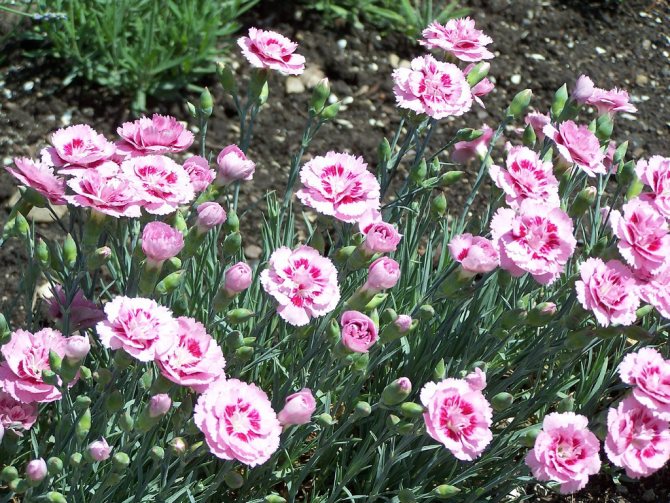

In its natural environment, it prefers sunny and dry places, loves areas of the suboceanic climate. Wild grass can be found in the European part of Russia in zones with a mild climate, in some regions of Siberia. She creates rich thickets that attract bees with her personal gentle sweet scent.
According to legend, Louis IX, who was later classified as a saint, with the help of a herb carnation, cured his warriors-godparents of the plague during the siege of the city of Tunisia. This was during the last Crusade, in 1270. It is worth noting that the king himself died of the same disease.
Perennial carnation: photo
Is the plant sick
Perennial carnation is characterized by such diseases and pests:
- Ticks.
- Aphid.
- Gray rot.
- Rust.
- Mosaic.
- Fungus, etc.
So that you do not have to treat the plant, get rid of annoying pests, you need to properly care for it. Strong cloves have good immunity.
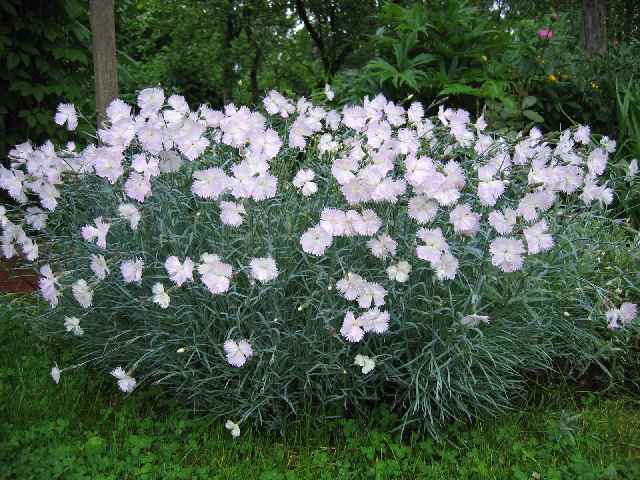

Observe the watering rules, loosen the soil more often and remove weeds, transplant the bushes to a new area every 2-3 years. In this case, most of the problems can be avoided.
Treatment of diseases
Chinese carnation is susceptible to both viral and fungal diseases that can damage both the green part of the plant and its root system.
- Fusarium wilting. Its appearance will be evidenced by discoloration of the leaves, a change in the color of the stem to a dirty yellow and gradual drying of the plant: the tissues of the stem turn into straw, which, when kneaded in the hand, crumbles into dust. Unfortunately, there is currently no cure for this disease and the affected specimens die after a while. The only thing that can be done is to provide prophylaxis: to treat healthy plants with the preparation "Baktofit".
- White and brown rot. The main signs of these diseases are rotten spots on the stems of plants, inside which are the mycelium of the fungus.At the same time, the flowers look depressed and gradually wither. In the fight against these diseases, the drugs "Rovral" and "Fitosporin M" are used.
- Rust. It manifests itself as yellowish pads on the stems. After a while, the infected plant dies. For treatment, Bordeaux liquid is usually used, with which I spray diseased specimens.
Important! Do not plant Chinese carnations near conifers. Otherwise, rust cannot be avoided!
- Viruses. When affected by a viral disease, the foliage begins to discolor, the central veins acquire a yellowish tint, the growth of the plant slows down. In this case, variegation often develops. In order to prevent the virus from spreading to other specimens of diseased plants, they should be immediately removed.
Growing features
Chinese carnation is good because it often self-seeds. In autumn, the seeds fall into the ground, where they stratify during the winter season, and germinate with the arrival of heat. Thus, the gardener can only plant the entrances that appear.
If you are growing a Chinese carnation for the first time, then for this, first of all, you should purchase seeds. They can be found without much difficulty in specialized stores. The acquired planting material is sown directly into the open ground or grown in the house. The second option is more acceptable, as it allows you to create optimal conditions for plants and get strong healthy shoots as a result. However, in general, this method has no particular advantages, since direct sowing in any case is carried out after the threat of the slightest frost has passed.
The first flowering of annuals begins three months after the seed is laid. Perennial Chinese carnation, subject to proper care, begins to bloom in the second year after planting, and then only when grown indoors and stimulating flowering.
We care properly
Caring for a perennial carnation will not take much effort, the flower is quite unpretentious. You need to follow a few simple rules, and the flower will delight with its aroma and flowering:
- Timely watering.
- Removal of weeds and weeds.
- Top dressing.
- Pruning. After the carnation has faded, its buds are carefully cut.
Important! Excessive dampness will be detrimental to cloves. Therefore, it should be watered frequently, but in small quantities. Pay close attention to the period when the snow begins to melt or it rains abundantly. The earth needs periodic loosening. A large amount of moisture can lead to putrefactive processes in the root system.
At the end of the flowering period, not only the buds are cut off, but the stems are also shortened. For proper care and attentive attitude, the carnation will be grateful, and will bloom for the second time in late August and early September.
In winter, it is recommended to cover the carnation (wrap it up), especially in frosty weather. Many growers do not leave the flower in the ground, but transplant it into pots and containers and move it indoors. The plant tolerates such wintering successfully.
Growing seedlings from seeds
Effective method, good process efficiency: Chinese carnation has a high germination rate. When work with planting material begins in March, then in the second decade of May, you can transplant the cut seedlings to a flower bed or to another place on the site.
Soil and capacity
For seedlings, you will need a large plastic container with compartments or a wooden box. It is important that the container is deep and wide enough. The best option is to treat the containers with fungicides or a strong solution of potassium permanganate. Species from the Clove family do not tolerate the effects of putrefactive flora, it is necessary to protect seeds and future seedlings from the influence of pathogenic microorganisms.
The soil is needed loose (add sand, 1 part) and nutritious (mix garden soil with peat in equal proportions, 2 parts each).It is useful to calcine the soil for growing sprouts of Chinese terry carnation mix in the oven or process it with the same means as the substrate.
Planting seeds
Procedure:
- First, the prepared soil is poured into disinfected containers, leveled, sprinkled moderately with settled water, wait for the moisture to drain a little, and the surface dries slightly.
- The seeds are planted shallowly: you just need to press the planting material a little into the ground.
- Sprinkle the grains on top with a thin layer of moist substrate, spray a little again.
- The greenhouse is covered with a plastic bag or glass, the container is placed in a bright room with a moderate temperature: from +17 to +20 degrees.
- Every two days, they open the greenhouse for 10 minutes, ventilate the substrate, and wash off the condensate.
- Seedlings of Chinese carnation appear in about 10-12 days.
- Over the course of two to three days, you need to gradually open the glass more and more, on the fourth day, completely remove it so that the sprouts breathe well.
Seedling care
The rules are simple, the quality and strength of the seedlings depends on their observance. At this stage, it is very important to adjust the room temperature: many novice growers place seedlings in a warm room, the sprouts are pulled out ahead of time, which negatively affects the state of the young carnation.
Recommendations:
- watering. Gently, moderately adding liquid under each seedling or from the edges of the box, so that water does not accumulate near the sprouts. The liquid is not used immediately from the tap; it must be defended for two days. The water is warm, you can add a little potassium permanganate if there are signs of decay;
- temperature. After the formation of seedlings, the indicators are moderate so that the seedlings do not stretch too actively. We'll have to find a cool place (+ 14..15 ° С) for a box or container with seedlings. It is important that at an average temperature there is no lack of light, otherwise the risk of fungal diseases increases, especially with excessive watering;
- picking. Seedlings of Chinese terry carnation mix do not differ in this indicator from most species of beautifully flowering plants: grown seedlings are planted when two or three real leaves appear. Peat pots, 200-300 ml containers from sour cream or yogurt are suitable container options for growing seedlings of terry cloves. It is useful to know how to choose a peat cup so that a young plant forms in a high-quality, nutrient medium.
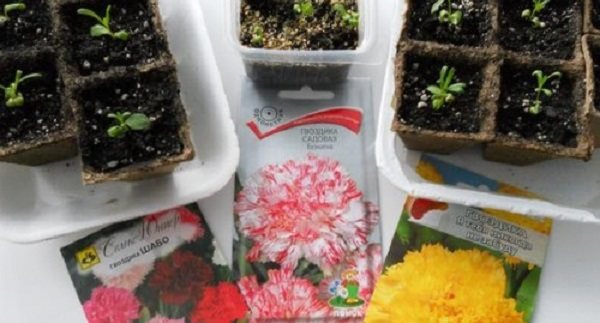

Transplanting
Grown up and unpicked seedlings are moved to the garden in the third or fourth decade of May. The frosts have stopped, it is warm outside, there are all conditions for growth and abundant flowering.
The soil is carefully dug up and loosened, weeds and roots must be removed, a little organic matter (peat or compost) is introduced before digging. The soil should be moist, loose, the pits should be medium in size, so that the planted bushes do not go too deep. The interval between neighboring plants depends on the variety: undersized - about 20 cm, medium-sized - 25 cm, tall, lush bushes - 30-35 cm.
Important nuances:
- Terry carnation sprouts are planted on a day with light cloudiness, without rain.
- Harsh wind and fog are factors that hinder landing. After planting, young bushes are watered moderately.
- Many growers create a thin layer of mulch in the planting area so that moisture evaporates less.
- It is enough to pour about 0.7 cm of peat. Soil mulching is useful in regions where it rarely rains.
Botanical description and photo of flowers
Clove is a perennial herb from the clove family. In culture, the flower has been known since the times of Ancient Rome. Today, more than three hundred varieties of perennial carnations have been bred. The stalk of the carnation is glabrous, knotty. Narrow leaves have a grayish and even bluish tint.
Breeders do not get tired of working on improving the appearance of the carnation.The color scheme is absent except perhaps the blue color. Bicolor hybrids have also been bred with a beautiful contrasting border along the edge of the petals, with specks, dots and strokes. In the species carnation, flowers are mostly not double, while garden varieties are distinguished by a wide variety of flower shapes.
Pinnate carnation (terry)
If you need to create a green carpet in a flower arrangement, there is no better plant. An amazing perennial has the ability to grow, while forming bushes that fill the necessary spaces of the flower garden like a carpet. This is the pinnate garden carnation. On stems reaching a height of thirty to forty centimeters, numerous bright inflorescences with a delicate aroma are piled up.
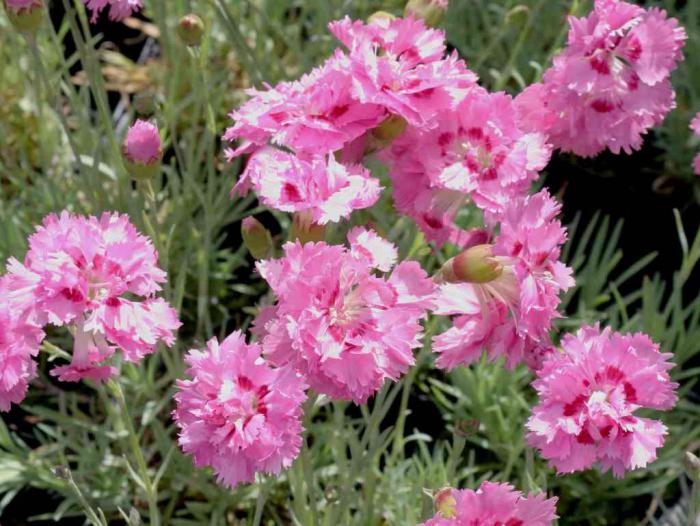

Flowering occurs in May – July, September. The flowers of the pinnate carnation are most often pink, red, crimson, or white. Terry varieties "Alba", "Desdemona", "Romance" and "Pomegranate" are especially beautiful. You should also pay attention to remontant and dwarf forms. These plants are quite unpretentious, have good winter-hardy qualities.
Species diversity
There are about 300 species in the genus of carnations, and in almost each of them there are dozens of varieties. Even just listing them all in one article is impossible. Breeders are actively inventing something new. In relation to the Chinese carnation, there is truly no limit to imagination! The varieties with simple flowers and the Chinese terry carnation are equally popular. Caring for her is carried out according to the general rules. Growing it from seeds can upset the receipt of non-double inflorescences, but in general it does not cause difficulties, and pleases with flowering a little longer than varieties with simple five-petal corollas.
Autumn care
Chinese carnation seeds are harvested after ripening. Perennials often hibernate in the ground, tolerate frosts well, if the owners took care of the shelter of the plants. At first, the bushes are cut almost at the root (no more than 10 cm), then they are covered with a layer of peat or fallen leaves (about 12 cm).
Usually, simple activities are enough to keep the base of a beautifully blooming look until spring. Wintering is rather smooth, especially when there is an abundance of snow and a moderate temperature regime: no frost below -10 degrees.

